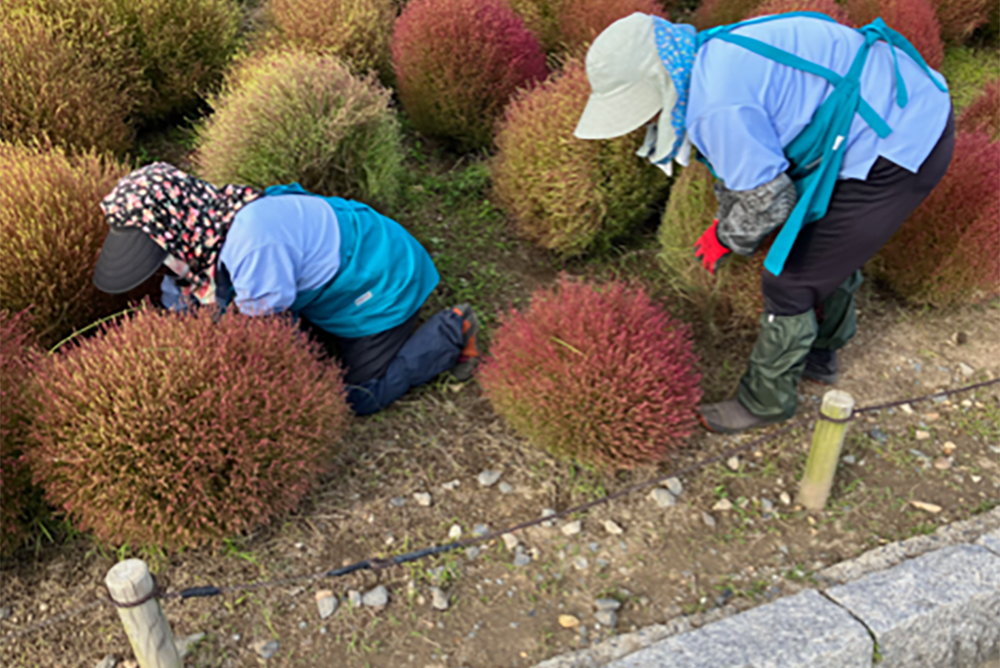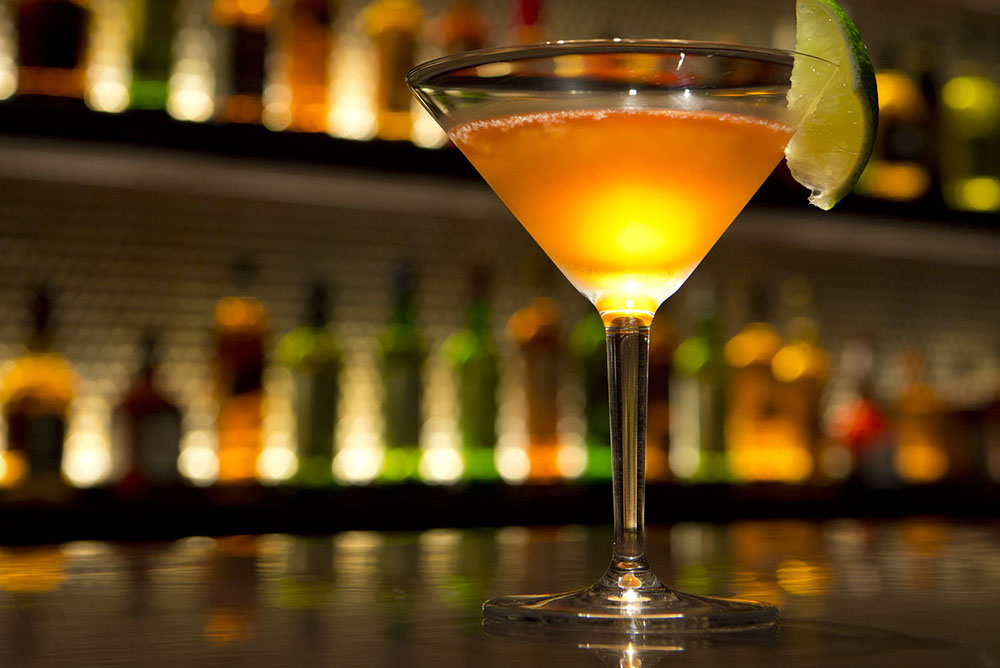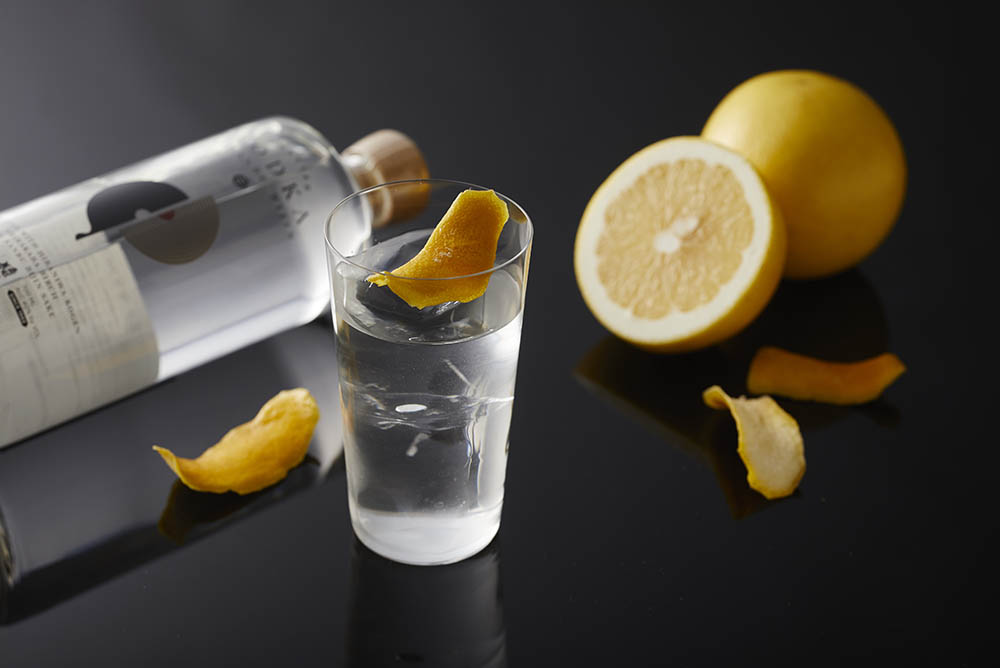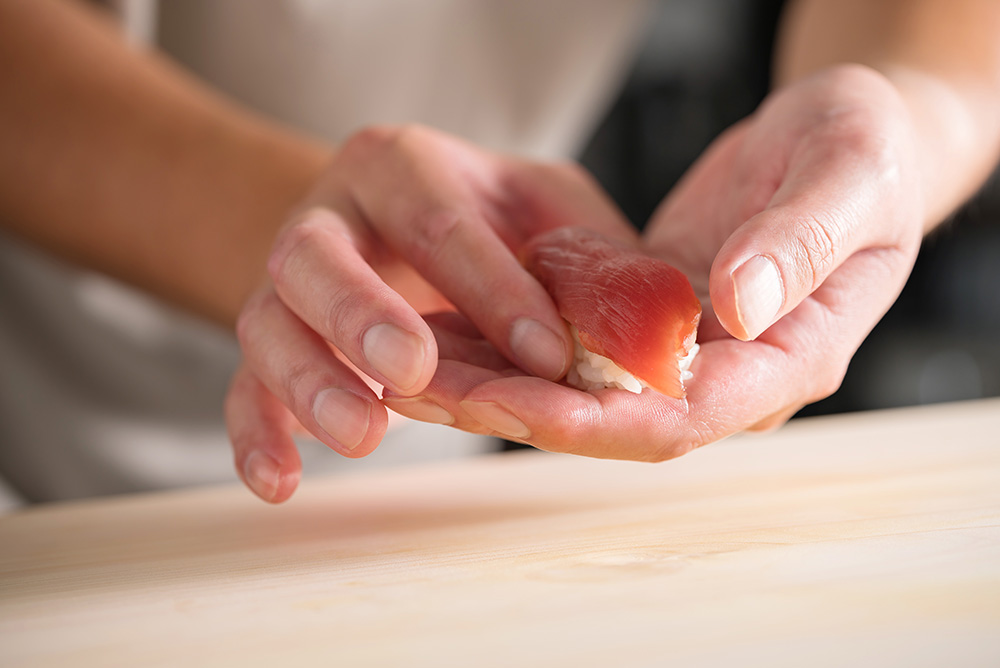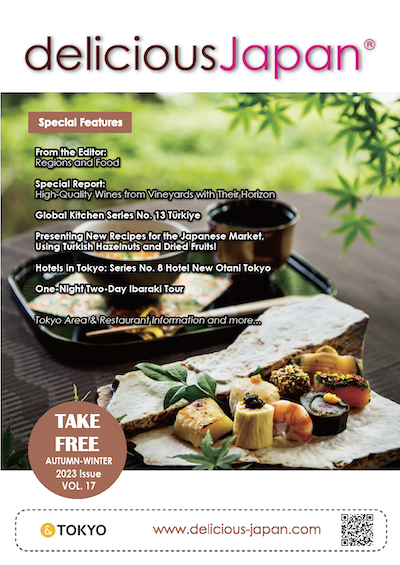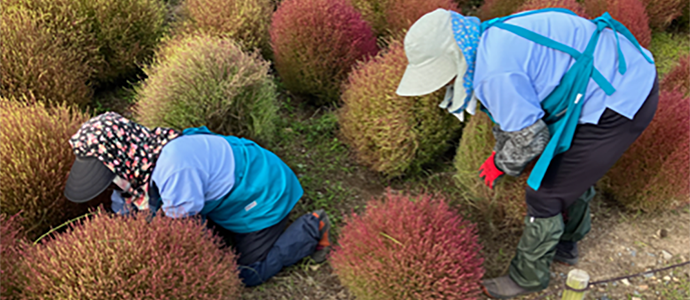
One-Night Two-Day Ibaraki Tour
Historic and Innovative Explorations with Patricia Yarrow
Introduction to Ibaraki
Embedded into the northern reaches of the great Kanto plain, Ibaraki Prefecture stretches from an extended seaside shoreline across agricultural fields and up into the hefty hills sprinkled with impressive Shinto shrines. A welcome relief from the congestion and hubbub of the Tokyo metropolitan sprawl, here the insects hum and birds warble uncontested. Luxurious rice fields reflect the sky and stars, and small towns pursue their individual histories and customs, including innovative sake breweries using that local rice, powered by a rugged individuality. Notably, Sudo Honke in Kasama City is said to be the oldest sake brewery (est. 1141 AD) in Japan! Ibaraki is an easy day trip or extended sojourn, with much to offer. Let’s explore a sampling here.
DAY 1
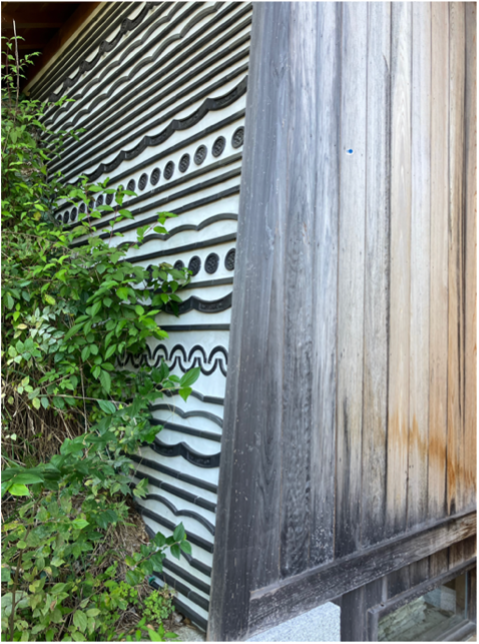 Slate roof tiles decoratively line up by the wooden gate entrance (Ote-mon)in a tour de force of intriguing rhythmic patterning. The original wall is showcased in the lower right corner.
Slate roof tiles decoratively line up by the wooden gate entrance (Ote-mon)in a tour de force of intriguing rhythmic patterning. The original wall is showcased in the lower right corner.Kodokan (Broad Path Hall) is an evocative chance to walk through early-modern Japan when it was new. Established in 1841, Kodokan is an educational heritage of early modern Japan. After a long walk surrounded by white plaster walls capped by a river of grey tiles awaits the Ote-mon, an overwhelmingly massive wooden gate constructed by traditional joinery techniques. The original tatami mat for founder Tokugawa Nariaki uses techniques that are rarely seen in modern versions. Long a centre of learning, including compiling the history of Japan, this is a chance to walk through what it must have been like in the glorious days of the flower of the Tokugawa/Edo Era (1603-1868) from the 1840s. Informative plaques often include English.
Address: 1-6-29, Sannomaru, Mito City, Ibaraki
Open hours: 9:00-17:00 (Feb. 20 - Sep. 30), 9:00-16:30 (Oct. 1 - Feb. 19), Closed: Dec. 29-31
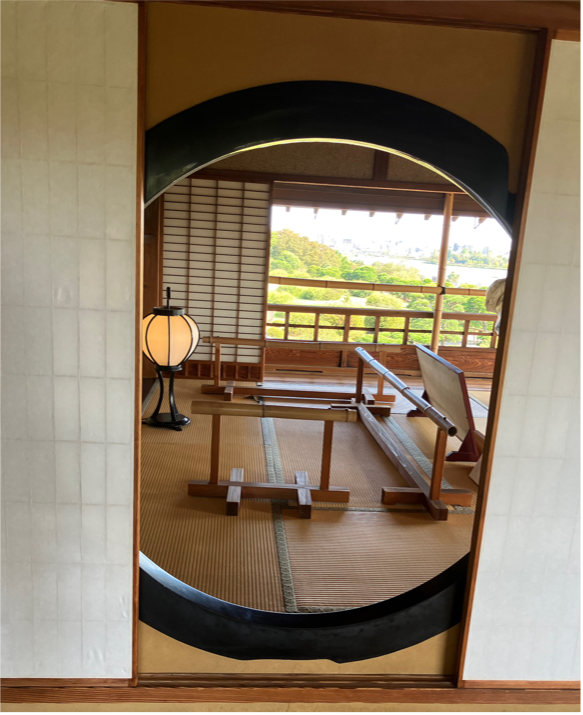 Intersecting layers of traditional Japanese screens frame for the lush park forest below.
Intersecting layers of traditional Japanese screens frame for the lush park forest below.Kairakuen (Pleasure Garden) is another garden envisioned by Tokugawa Nariaki in 1842 as a cultural and recreational counterpart to Kodokan. Bamboo groves tower to one side of a path, and stately Japanese cedar on the others. A marble fountain falls victim to the spring water, placidly eroding away in a cycle of approximately 30 years.
After a long day of learning philosophy, politics or history, sweating it out with martial arts, studying astronomy or medicine at the Kodokan, unwind at the Kairakuen. This garden was destroyed during the war and later rebuilt as an open-air walking park in 1958. Overseen by Kobuntei, the vista from the movie-set worthy Japanese traditional banquet facility opens over the lake and hillsides. An astonishing array of plum trees, showing their age as they twist and twine, and slowly hollow out in their latter years. Other shrubs and trees have respectfully been allowed to age naturally into a dancing circus of form. While famous for the blossoming season, go anytime for the unsuppressed trees and forests. Quite a few signs include English.
Nearby Tokiwa Shrine (1874) is an inari fox-god Shinto shrine, not too large, with a picturesque parade of red torii gates, a satisfied-looking stone frog, inscribed sake barrels, and two perky stone foxes standing stolidly on guard.
Address: 1-3-3, Tokiwacho, Mito City, Ibaraki
Open every day: 6:00-19:00 (Feb. 20 - Sep. 30), 7:00-18:00 (Oct. 1 - Feb. 19)
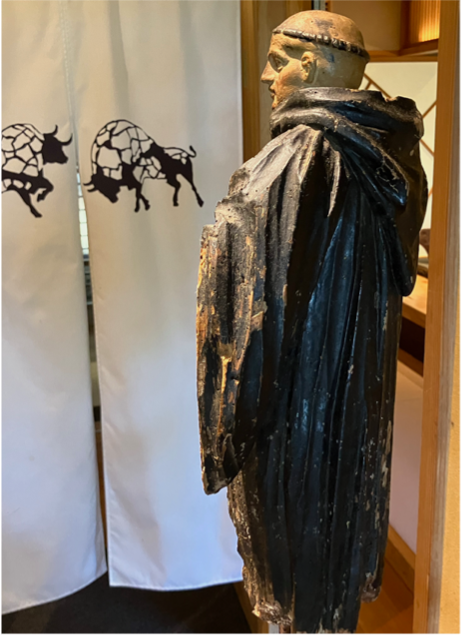 A weathered Benedictine monk peckishly contemplates Wagyuan’s noren curtain of robust fighting bovines.
A weathered Benedictine monk peckishly contemplates Wagyuan’s noren curtain of robust fighting bovines.Plummeting down a narrow sideroad, disembark at the eccentric Wagyuan (Wagyu beef hermitage) enclave, a pleasing combination of Japanese gardens, touches of polished blond panel walls and paper screens sitting comfortably with western furniture. Prefaced by an assorted greeneries salad, oolong tea in a lipped wineglass, and the main attraction: deceptively mild flavoured thin strips of wagyu, an elegant intwining of glistening marbled red and white meat and marbled fat, the epitome of crafted beef. Living up to the “hermitage” theme, this was a bucolic place to leave the day behind (or the evening at the bar ensconced in the back), and float in the wagyu juices, quirky Japanese woodwork, and western artifacts.
Address: 3-695, Migawa, Mito City, Ibaraki
Lunch: 11:30-15:00 (L.O.14:00), Dinner: 18:00-22:00 (L.O. 21:00), Closed on Wednesday
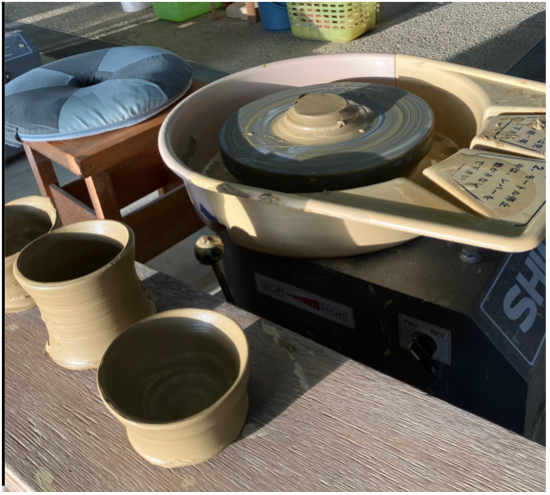 My finest pottery attempt thanks the potter’s wheel and awaits its baptism of glazing and firing. A very mysterious and satisfying process.
My finest pottery attempt thanks the potter’s wheel and awaits its baptism of glazing and firing. A very mysterious and satisfying process.Craft Hills Kasama (Kasama Crafts on the Hill) honours the diverse pottery tradition of the Kasama area. Creations follow two paths: traditional and innovative, and are on extensive showroom display. I am mesmerized by a simple sake cup (guinomi) thrown by Tsutsumi Ayako, who had passed away in 2021 at 92. It was like nothing I have experienced, holding the glowing dark brown glazed, runneled surface. This is the magic of pottery.
Next, the workshop, where, carefully guided by aproned staff, I encountered the fine-grained clay at the potter’s wheel. Channelling all I knew about guiding the clay, I produced two wobbly bowls, and improved with a final small vessel. For this little dandy, I chose a rather austere soft white for a finishing glaze. It will be a Christmas surprise upon delivery to my doorstep in Tokyo.
Address: 2388-1, Kasama, Kasama City, Ibaraki
Open hours: 10:00-17:00, Closed on Mondays
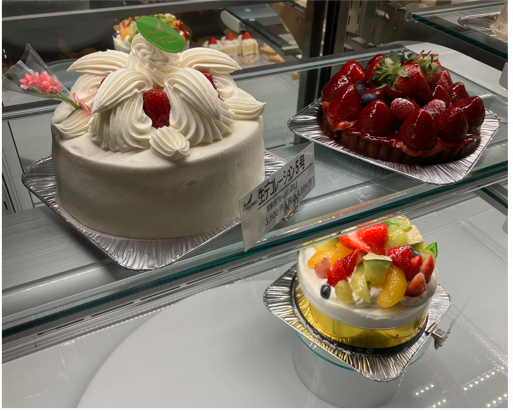 Gruyeres’ famed confectionery display of rapturously fantasized sweet desserts.
Gruyeres’ famed confectionery display of rapturously fantasized sweet desserts.Western-style confectionery Gruyeres, named for a medieval town in Switzerland, and famed for Gruyeres cheese. No cheese here, but the Mont Blanc ball kuri (chestnut)-flavoured coating over a gooey and crunchy interior concoction was an adventure to puzzle out how to move it into the fork. This is a small, local cafe with a pastry parlour atmosphere, and at 40 years old (est. 1985), a bit of a time travel into the past. Come for the famed Mont Blanc, leave with a delightful dessert from their display case of imaginatively artistic cakes and other sweet goodies. A steady stream of customers indicates this is a neighbourhood favourite.
Address: 285, Shimoichige, Kasama City, Ibaraki
Open hours: 10:30-17:00 (L.O.16:30), Take-out: 9:00-18:00
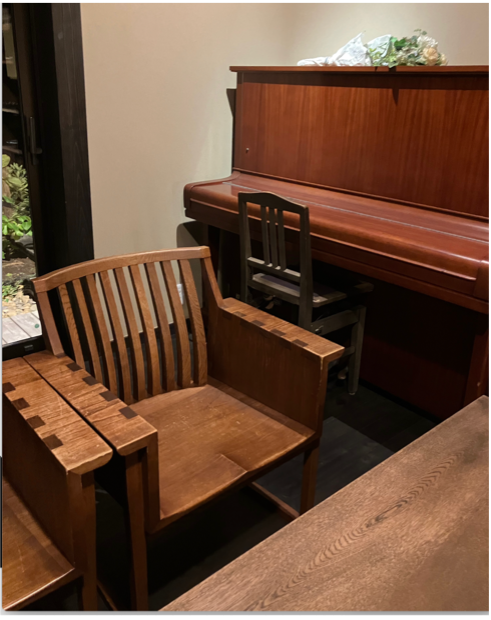 What better way to spend the evening than snuggle into the creature comforts of fine furnishings and a seaward view of waves washing in under the moonlight?
What better way to spend the evening than snuggle into the creature comforts of fine furnishings and a seaward view of waves washing in under the moonlight?Satoumitei (Villa in a Rural Area), along the coast, features the perfect waiting room just past the tatami-matted Japanese bare wood and washi papered entrance. Overlooking the breaking waves through the pine forest boughs, we find many touches for the comfort of the guest, including sturdy art deco wooden chairs, deceptively comfortable, an in-wall wood-burning stove, a piano at the ready, wooden floors with woven throw rugs, and a collection of books and CDs for music in the background. As the waves rolled in, we longed to remain and savour the evening.
Address: 6883, Isohamacho, Oaraimachi, Higashi Ibaraki-gun, Ibaraki
Phone: 029-267-2101 (10:00-17:00)
DAY 2
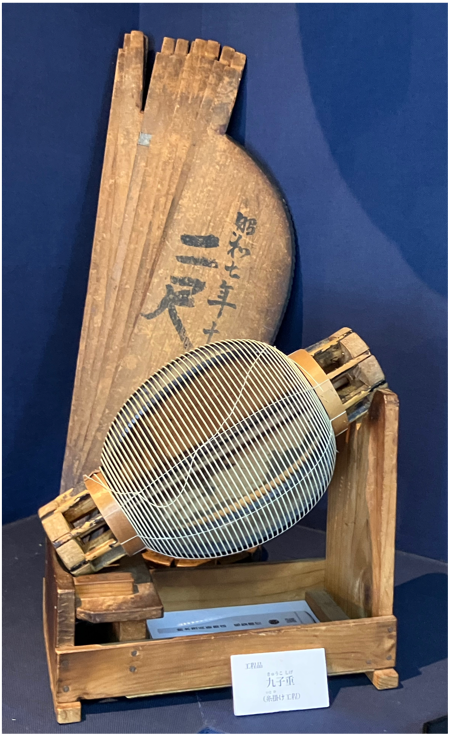 For centuries, paper lanterns were constructed from a brilliantly simple method. The strings are fitted into a spiral of notched slats in a framework for quick production. Paper or silk is glued over the edges, and voilà.
For centuries, paper lanterns were constructed from a brilliantly simple method. The strings are fitted into a spiral of notched slats in a framework for quick production. Paper or silk is glued over the edges, and voilà.Suzuki Mohei Shoten (established by Suzuki Mohei IV in 1865). Stroll into the showroom and walk back in time to when paper lanterns were part of standard lighting. However, a walk around the other displays hints at continual technical sophistication, proven when, with a snap of the fingers, or clap of the hands, a glowing light springs up from within. I have wondered how the long, thin strips of bamboo were placed into the round or lengthy paper lantern. A few moments in the workshop room, guided through the process of making our own lantern, and the answers are revealed. I will leave you to find the answers, but now I look upon the construction of the humble paper lantern with new percipience. My own creation hangs on the wall behind me, for my Zoom audiences to admire.
Address: 1-7-5, Hakamazuka, Mito City, Ibaraki
Open hours: 9:00-18:00, Closed on Saturdays, Sundays, and National Holidays
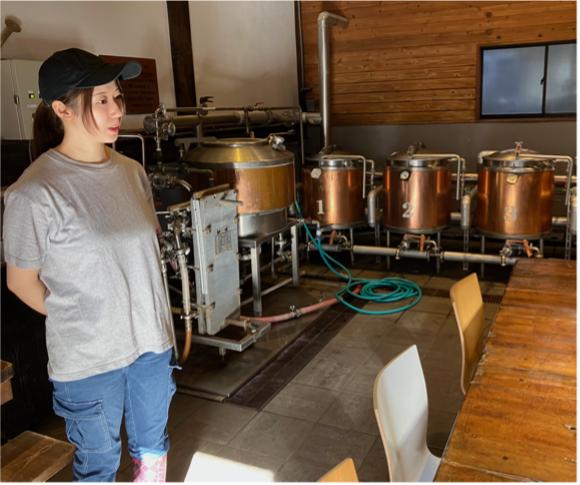 Just one corner of the multi-faceted Kiuchi compound. Brewing is pleasant work on a bracing autumn afternoon.
Just one corner of the multi-faceted Kiuchi compound. Brewing is pleasant work on a bracing autumn afternoon. Kiuchi Brewery (“Wooden Interior” brewery), a classic white stucco and slate grey roof tiled structure, makers of the “Hitachino Nest Beer” (“Nest is Best”) for a soba noodle lunch in the cozy restaurant, matches with a selection of the light Nest beer. I find myself noticing the large glowing white paper lanterns hanging from the tall ceilings with newfound appreciation. A large gift shop features their sake and beer. The courtyard unassumingly houses several astonishingly leggy bonsai trees. Several visitors were engaged in a beer-making exercise. Traces of the old structures from 1823 mix pleasantly with the modern, airy jumble of showrooms and working stations. The Hitachino Nest Beer with the owl icon is widely available in Tokyo’s sake stores and is a fresh, light imbibement.
Address: 808, Minami Sakaide, Naka City, Ibaraki
Call for products & brewery tour: 029-212-5111
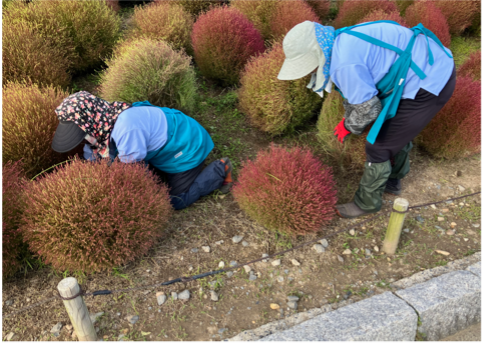 Swathes of wind-blown bushy orbs of colourful kochia are watched over by equally rounded gardeners.
Swathes of wind-blown bushy orbs of colourful kochia are watched over by equally rounded gardeners.Hitachi Seaside Park (Hitachi Beachfront Park) is vast. The long walk to the hilltop overlooking the sea passes many areas for various events and outdoor activities. Planned for a comfortable walk, the asphalted pathways lead past the famous seasonal flower fields, with stretches of bobbing cosmos flowers and bushy kochia (summer cypress). Surprisingly, a vast field of knee-high green weeds proved to be a soba field, whose seeds, we surmise, will later be pounded into soba flour for future noodles. Dating couples in saucy outfits mingle with head-covered Muslim ladies in a congenial mix of young and old, dog walkers, baby carriage pushers, and a sprinkling of international visitors. Wide open skies and unobstructed vistas provide a welcome relief for this urban jungle Tokyoite.
Address: 605-4, Onuma-aza, Mawatari, Hitachinaka City, Ibaraki
Open hours: 9:30-17:00/16:30 or 18:00, depending on the season. Closed on Tuesdays
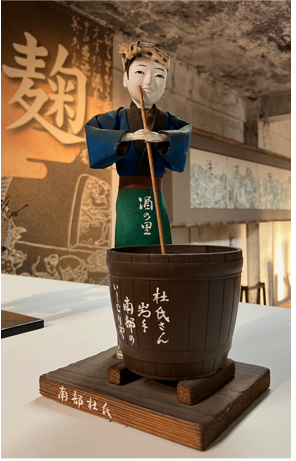 A wonderful homage to the sake brewers of yore, who dutifully plunged their long staves into the fermenting rice mash for many long hours.
A wonderful homage to the sake brewers of yore, who dutifully plunged their long staves into the fermenting rice mash for many long hours.Meirishurui (Shining Victory Liquor), est. 1950, has a surprising emphasis on tanks of aging plum wine, supplemented with towering steel aging vats, one snoozing from as far back as 2008. A dusty storeroom preserves the historic artifacts of premodern sake-making. No English, so imagination only. The well-stocked gift room provided a wealth of sake, gin, umeshu plum wine, of course, and packaged food such as miso with yuzu, sembei crackers, and sweet potato yokan bars.
Address: 338, Motoyoshida-cho, Mito City, Ibaraki
Open hours: 9:30-16:30, Closed on Mondays
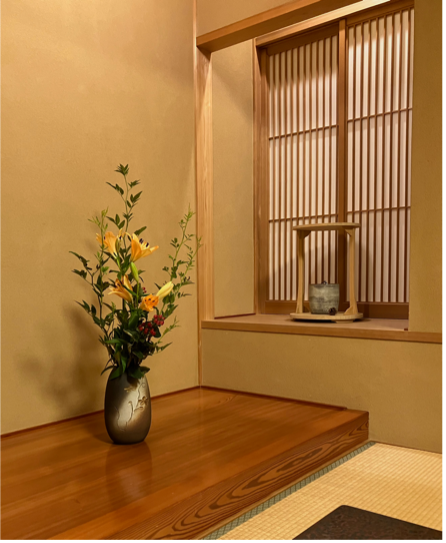 The tokonoma alcove keeps watch over the dinner proceedings. The boisterous autumn floral display elegantly accompanies the quiet ceramic vessel perched nearby.
The tokonoma alcove keeps watch over the dinner proceedings. The boisterous autumn floral display elegantly accompanies the quiet ceramic vessel perched nearby.Nuriya Restaurant (Colouring House), in central Mito, is a sparkling upscale unagi eel restaurant in traditional Japanese architecture. I am living the dream here. The classic brown-sauced unagi over rice dish was broiled to perfection and accompanied by a side-dish of unsauced unagi, which possesses the subtlety light flavour of the sea. From the austere tokonoma, the shoji screens to the high ceiling enclosed our low table and tatami mats, this was a beautifully composed setting.
Address: 3-5-9, Izumi-cho, Mito City, Ibaraki
Open hours: Lunch 11:30-14:00 (L.O.13:00), Dinner 17:00-21:00 (L.O.19:00) Closed on Sundays

